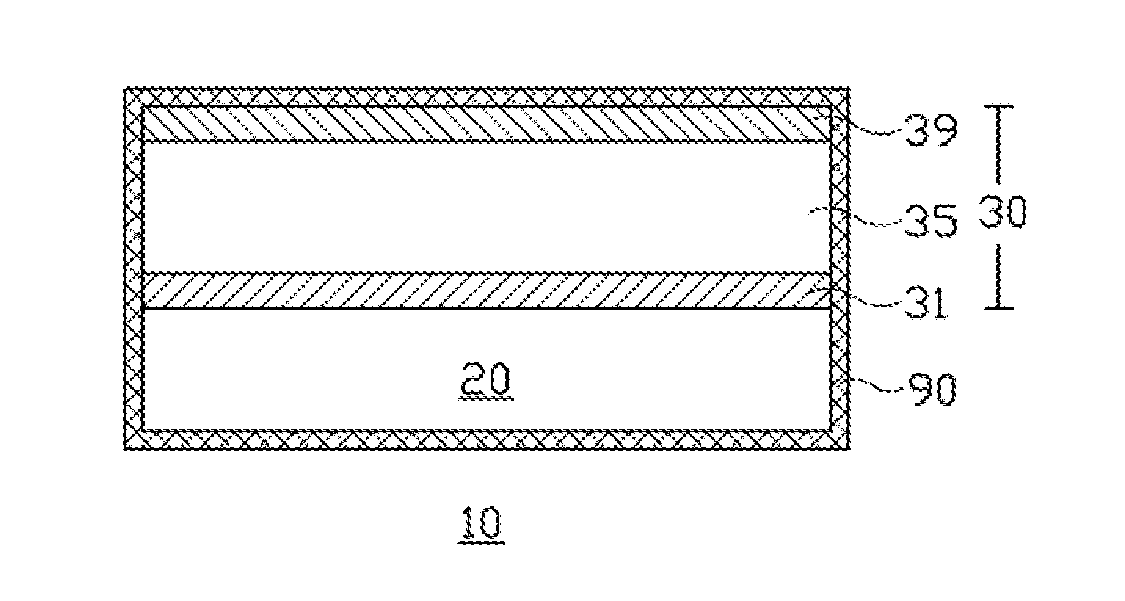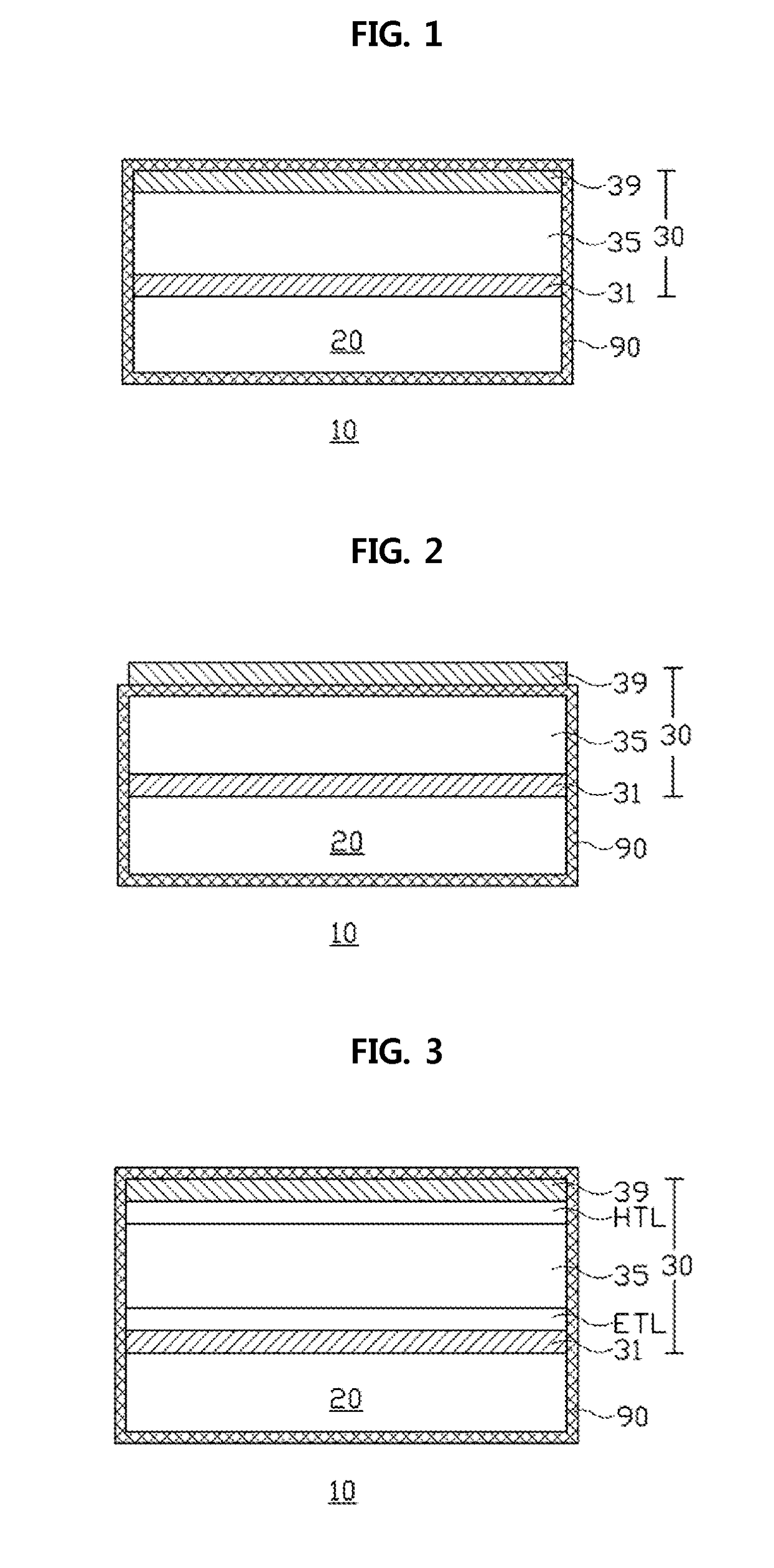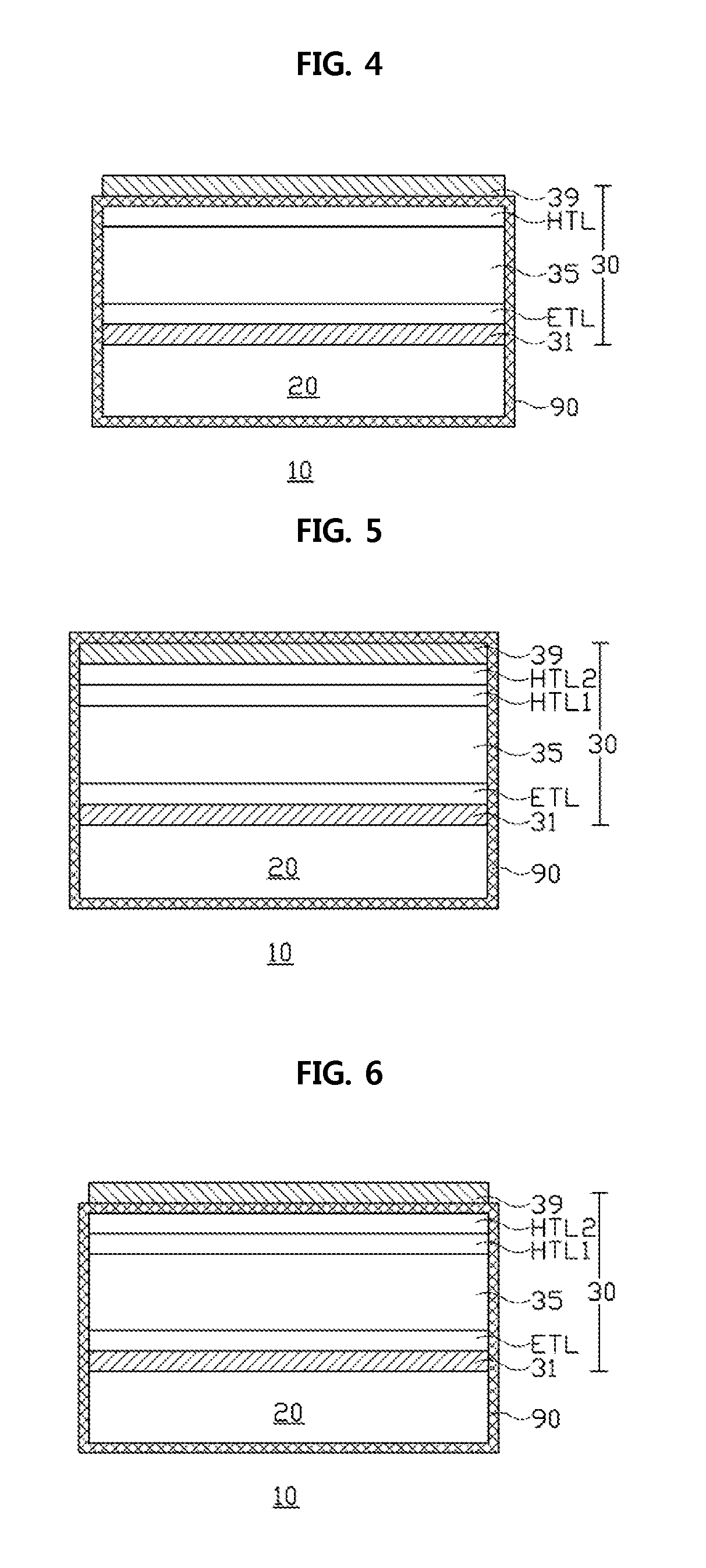X-ray detector
a detector and x-ray technology, applied in the field of x-ray detectors, can solve the problems of low sensitivity, limited use of photoconductor as a photoconductor, and high application voltage, and achieve the effects of low cost, easy manufacturing, and superior deposition properties on the substra
- Summary
- Abstract
- Description
- Claims
- Application Information
AI Technical Summary
Benefits of technology
Problems solved by technology
Method used
Image
Examples
first embodiment
[0033]A direct-conversion-type X-ray detector according to a first embodiment of the present invention includes a perovskite material serving as a photoconductor.
[0034]Perovskite, having a crystal structure represented by the chemical formula ABX3, is known to be a special material that exhibits the properties of all of a non-conductor, a semiconductor, a conductor, and even a superconductor. In this embodiment, such a perovskite material is used as the photoconductor.
[0035]Here, the perovskite material used in the present embodiment is specified, and materials that constitute ABX3 are as follows.
[0036]A: an organic material, examples of which include methyl ammonium (CH3NH3) and formamidinium (NH2CH═NH2), or an inorganic material, an example of which includes cesium (Cs);
[0037]B: a metal material, examples of which include divalent transition metals, such as Pb, Sn, Cu, Ni, Bi, Co, Fe, Mn, Cr, Cd, Ge, Yb, and the like;
[0038]X: a halogen material, examples of which include IxBr(1-x)...
second embodiment
[0094]The direct-conversion-type X-ray detector according to a second embodiment of the present invention includes a quantum dot material for converting X-rays having specific energy into visible light, in addition to the perovskite material as the photoconductor.
[0095]The perovskite material and the quantum dot material may have different X-ray energy ranges in terms of X-ray absorption efficiency, thus advantageously absorbing X-rays across a wide energy range from substantially low energy to high energy.
[0096]The quantum dot material is able to absorb X-rays in the corresponding energy range to thus emit visible light corresponding thereto. The perovskite material is able to absorb X-rays in the corresponding energy range to thus directly produce electron-hole pairs and also to absorb visible light emitted from the quantum dot material to thus produce electron-hole pairs therefor.
[0097]In this way, the X-ray detector of the present embodiment is responsible for a photoelectric co...
PUM
| Property | Measurement | Unit |
|---|---|---|
| thickness | aaaaa | aaaaa |
| thickness | aaaaa | aaaaa |
| thickness | aaaaa | aaaaa |
Abstract
Description
Claims
Application Information
 Login to View More
Login to View More - R&D
- Intellectual Property
- Life Sciences
- Materials
- Tech Scout
- Unparalleled Data Quality
- Higher Quality Content
- 60% Fewer Hallucinations
Browse by: Latest US Patents, China's latest patents, Technical Efficacy Thesaurus, Application Domain, Technology Topic, Popular Technical Reports.
© 2025 PatSnap. All rights reserved.Legal|Privacy policy|Modern Slavery Act Transparency Statement|Sitemap|About US| Contact US: help@patsnap.com



